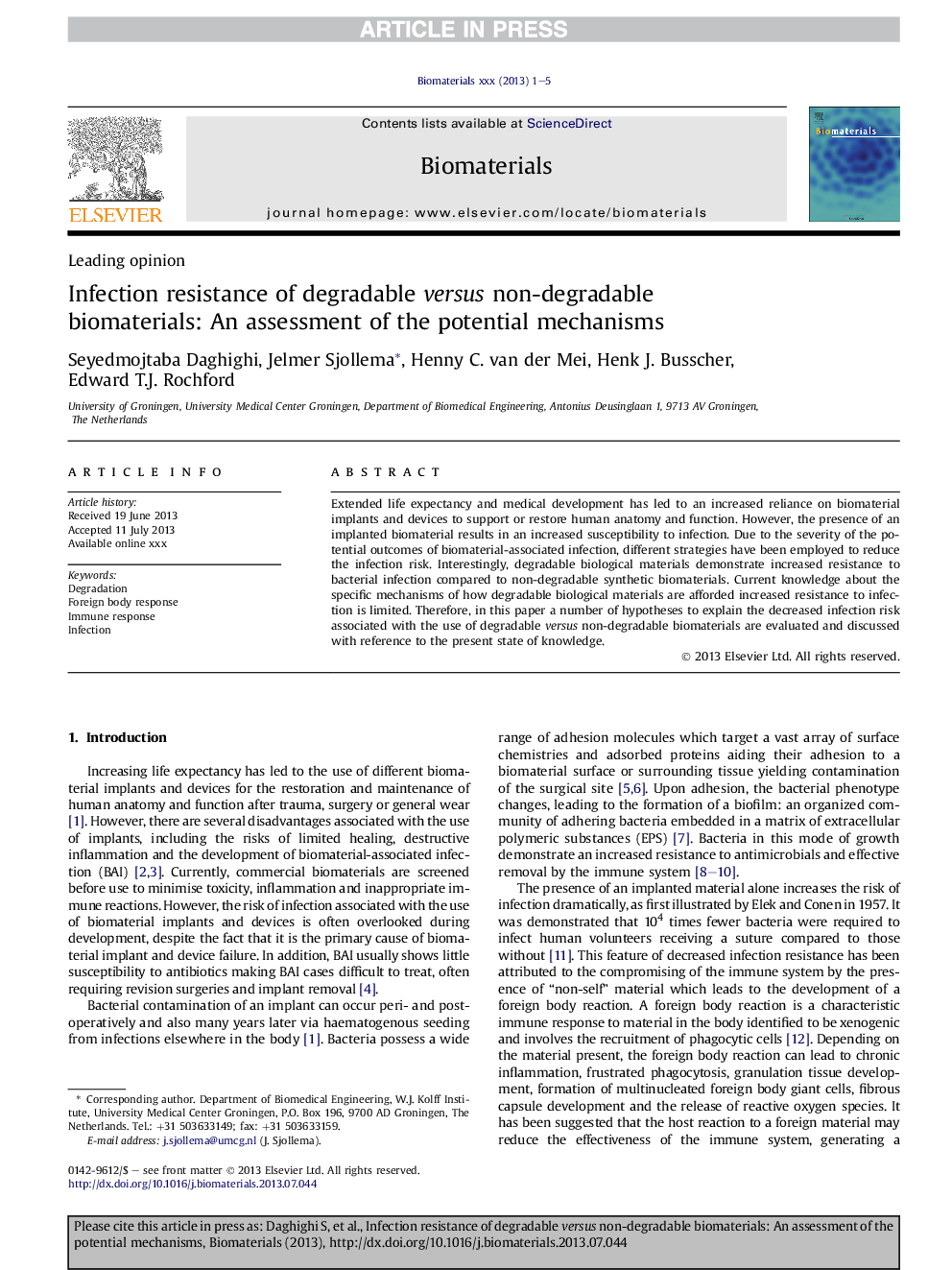| Article ID | Journal | Published Year | Pages | File Type |
|---|---|---|---|---|
| 10228455 | Biomaterials | 2013 | 5 Pages |
Abstract
Extended life expectancy and medical development has led to an increased reliance on biomaterial implants and devices to support or restore human anatomy and function. However, the presence of an implanted biomaterial results in an increased susceptibility to infection. Due to the severity of the potential outcomes of biomaterial-associated infection, different strategies have been employed to reduce the infection risk. Interestingly, degradable biological materials demonstrate increased resistance to bacterial infection compared to non-degradable synthetic biomaterials. Current knowledge about the specific mechanisms of how degradable biological materials are afforded increased resistance to infection is limited. Therefore, in this paper a number of hypotheses to explain the decreased infection risk associated with the use of degradable versus non-degradable biomaterials are evaluated and discussed with reference to the present state of knowledge.
Related Topics
Physical Sciences and Engineering
Chemical Engineering
Bioengineering
Authors
Seyedmojtaba Daghighi, Jelmer Sjollema, Henny C. van der Mei, Henk J. Busscher, Edward T.J. Rochford,
